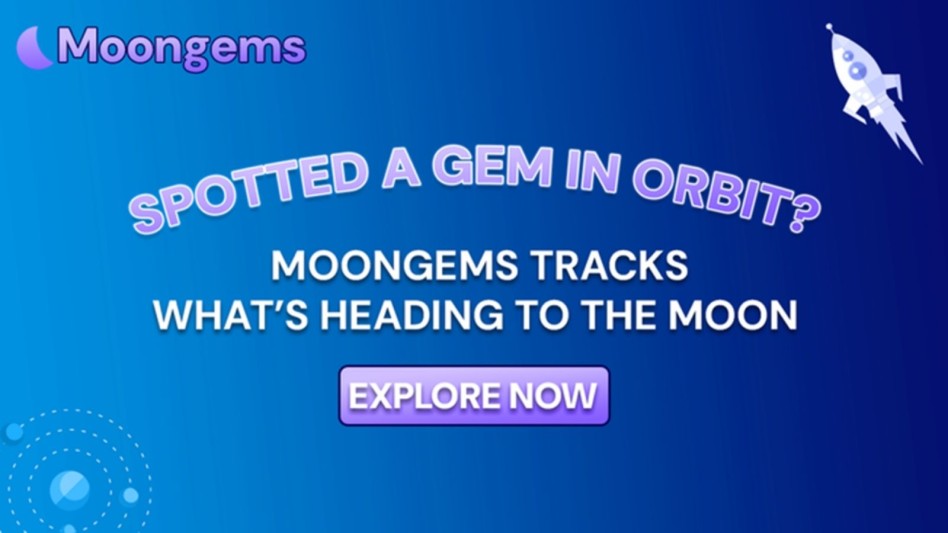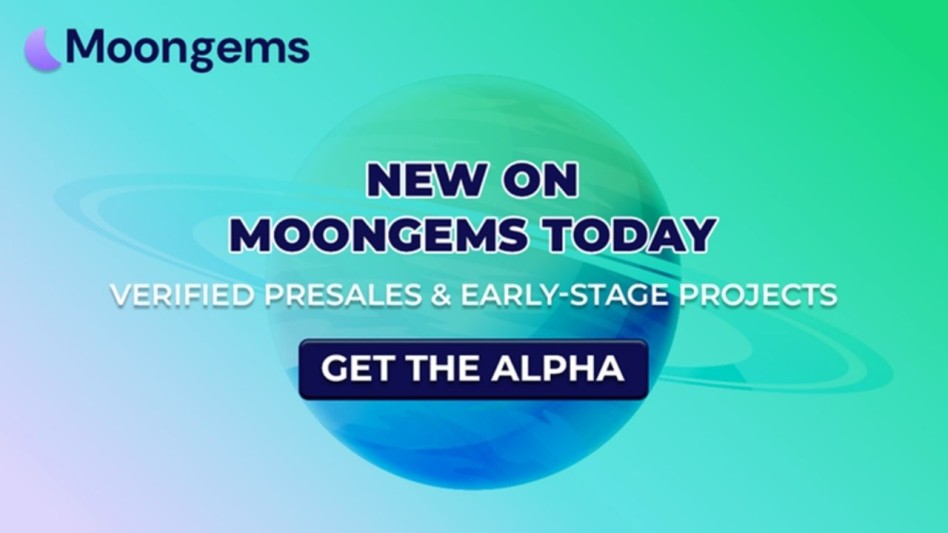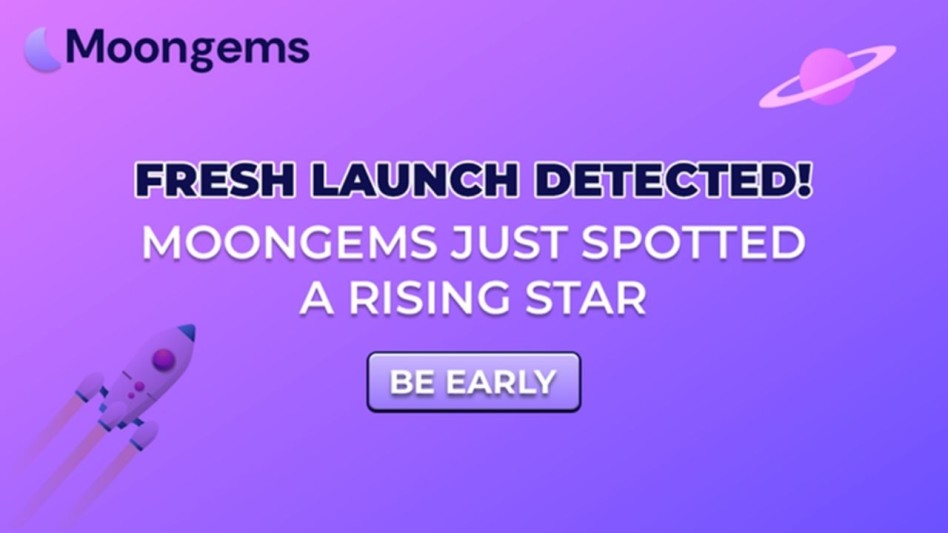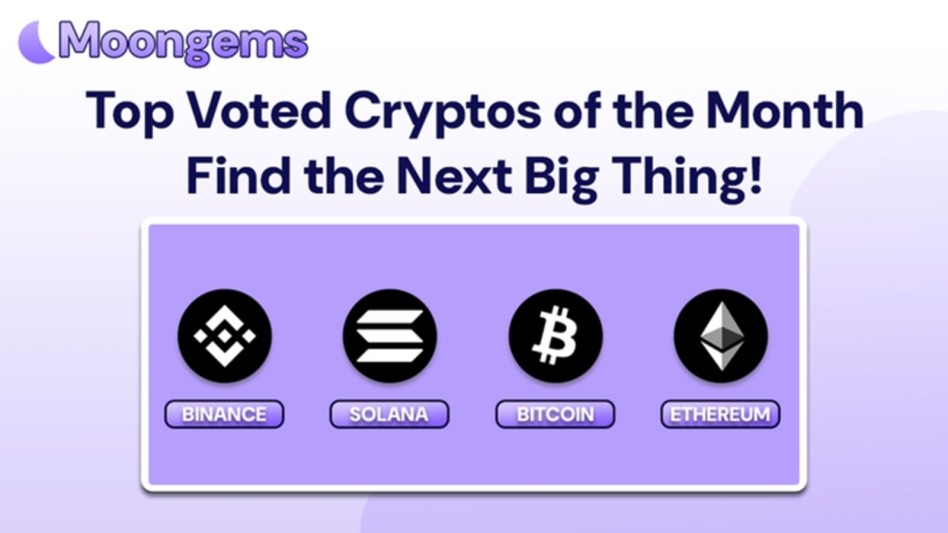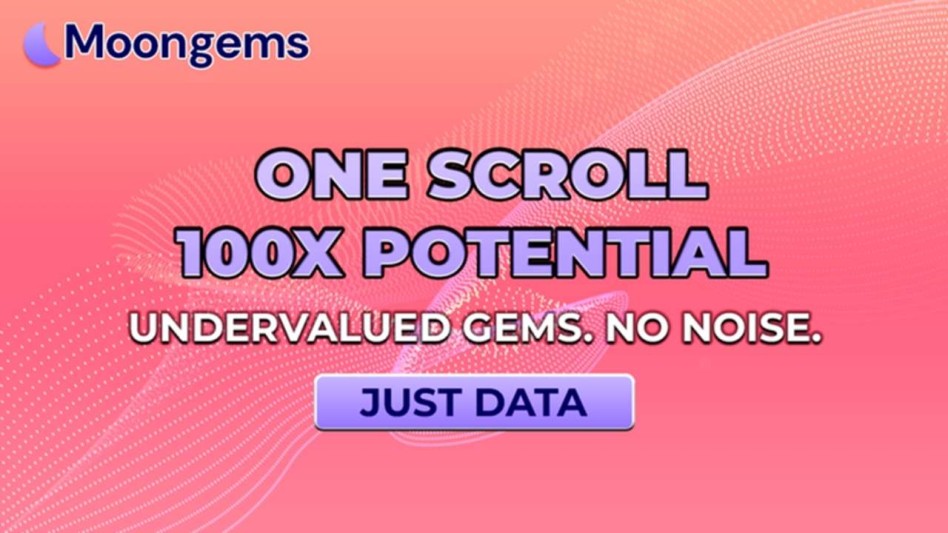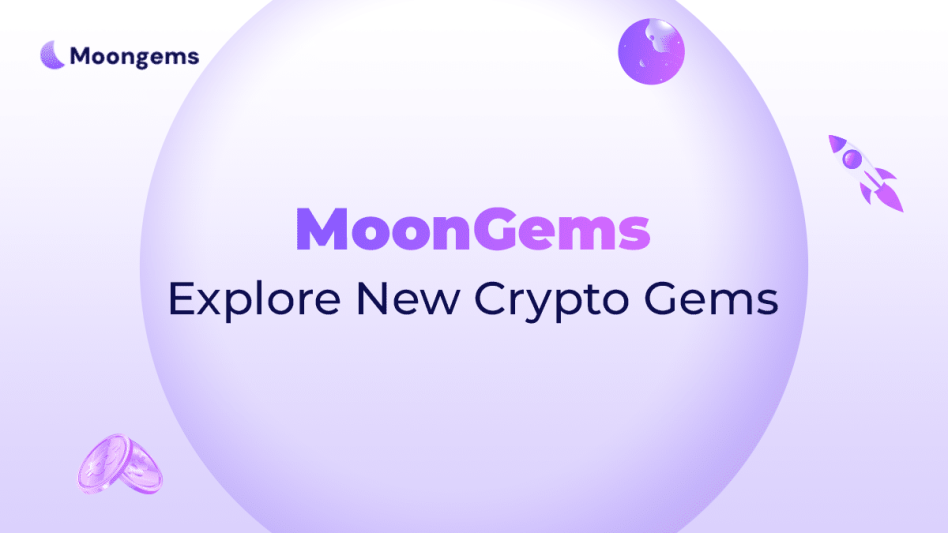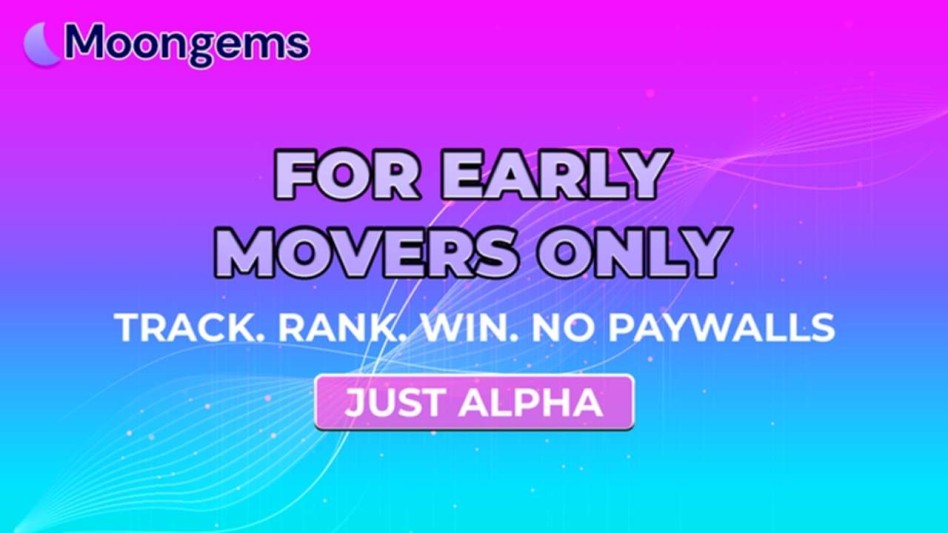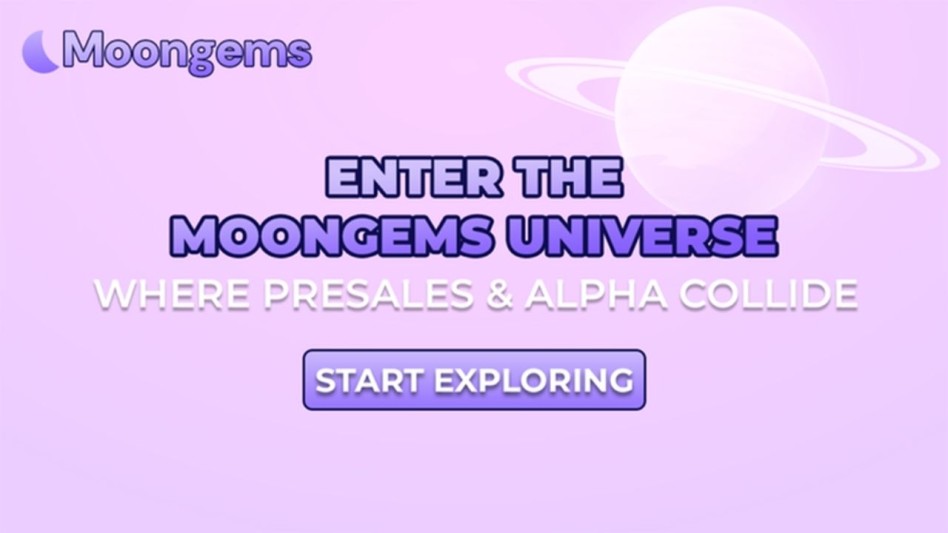Author: Jawad Hussain – Crypto Analyst & Web3 Researcher | 9+ years tracking presales, IDOs, and token launches. Follow him on X (formerly known as Twitter) and LinkedIn.
In 2025, “early” has become a bragging right in crypto. Everyone wants to be first—first in a presale, first to post it on X, first to claim they knew. However, being early only pays off when you’re backing a project that’s ready to execute—not just ready to raise funds.
Many investors mistakenly equate blind optimism with conviction. And in presales, where teams often launch before building, that optimism can quickly turn into a capital loss.
This MoonGems guide explains how to tell when a project is too early to justify your money. We’ll show you how to separate high-risk vapor from early-stage value using proof, timing, utility, and transparency.
1. No MVP, No Entry: Why Code Trumps Concepts
A working MVP—or at the very least, an internal prototype—is one of the clearest signals that a project is past the “idea” phase and moving into execution. If a presale project is asking for investor capital without even demonstrating a functional proof of concept, it’s too early. Period.
In 2025, the barrier to creating a polished white paper or animated explainer video is practically nonexistent. That’s not enough. What investors need to see is evidence that development has begun, and that the project is capable of delivering on at least one core promise. A GitHub repo with active commits. A testnet link. Screenshots from internal builds. Even a private demo recording. These signals separate serious builders from pitch-deck pretenders.
MoonGems tracks and displays MVP availability and dev activity wherever projects make it public. If a listing lacks this entirely and provides only vague promises of future functionality, investors should proceed with extreme caution. In presales, backing code that already exists is always smarter than betting on code that has only been imagined.
2. Roadmap Reality Check: Is the Timeline Believable?
A common trap in early presales is the fictional roadmap—a timeline so ambitious it would take a team of 20 full-stack engineers six months to build, but it’s being promised by a crew of three guys with a Telegram bot. Ambition is good. However, if a project’s roadmap resembles a wish list without considering resources, complexity, or actual development cycles, it’s too early.
Ask yourself: are staking, governance, CEX listings, and cross-chain integrations all supposedly happening in one quarter? If so, that roadmap is likely not grounded in reality. Projects at this stage often don’t understand what it takes to build, audit, test, and deploy at scale—and even less what it takes to launch successfully in volatile markets.
MoonGems makes it easier by offering visual snapshots of roadmaps side by side with the current development status, so you can judge whether promises match reality. If the timeline feels like marketing fluff with no friction, it’s safer to wait until the project delivers something verifiable. Believing in a roadmap is not a sin, but investing in one without context or constraints is how conviction becomes blind risk.
3. Zero-Utility Tokens With No Use Case Yet
Every token needs a purpose—staking, governance, access, reward distribution, liquidity facilitation, or some unique mechanism that drives user value. When a token launches with no clear utility and no roadmap for when that utility will arrive, it's not an early-stage opportunity. It's a placeholder for speculation.
Zero-utility tokens are common in meme-driven or hype-fueled launches. But even in those categories, the most successful coins now integrate staking, burns, NFT tie-ins, or platform access. A token that does absolutely nothing—now or in the near future—is essentially an IOU with no guarantee of value. Worse still, tokens like this often rely solely on momentum to attract retail investors, with no underlying mechanics to support long-term growth or stability.
MoonGems allows you to sort projects by token type and indicates whether the token has existing or planned functionality. If that section is missing or filled with vague terms like “future integration” or “TBD utility,” you’re not early—you’re exposed. Utility doesn’t have to be immediate, but it needs to be mapped, priced, and explained. Without that, your investment is tied to nothing but vapor and hope.
4. No Team Transparency or External Validation
When a presale team won’t tell you who they are, where they’ve built before, or whether they’ve been KYC’d or audited—it’s not “mysterious” or “stealth mode.” It’s a red flag waving in high wind. Early projects are risky enough without adding anonymity and unverifiable credentials into the mix.
Serious investors in 2025 look for transparency. That doesn’t always mean full public doxxing, but it does mean there should be at least one form of external validation: KYC through a launchpad, an audit by a reputable firm, LinkedIn profiles, GitHub contributions, or Twitter spaces with the founders.
MoonGems includes KYC and audit badges on verified projects, so you don’t need to dig through 15 different tabs. If a team refuses to show its faces or prove its experience, and yet expects millions in funding—something’s wrong. A project that’s truly building doesn’t hide. And if it’s hiding now, what happens when things go sideways post-TGE?
Backing undoxxed teams without reputation or verification isn’t early—it’s reckless. Transparency protects investors. Anything else puts you at the mercy of hope.
5. Presale Timing That Front-Runs Development
Some projects launch their presale before development has even begun—not because they’re building lean, but because they’re rushing to raise funds first, then figure out what to do with them. That’s a major red flag.
Presales are meant to accelerate validated ideas—not to finance ideas that haven’t been validated at all. If the majority of funds are allocated to “marketing,” “community growth,” or “brand building” before any code exists or product development has started, the project is front-running reality. This timing mismatch leads to serious problems post-TGE: token dumps, loss of momentum, community backlash, and lack of execution.
MoonGems rankings make it easier to track which projects are building first and launching second, versus those rushing out tokenomics and pitch decks before writing a single line of code. Great projects don’t rely on presale money to begin building—they use it to scale what’s already in motion.
If there’s no prototype, no team milestones, and no funding roadmap that supports product development before marketing, you're not investing early. You’re helping someone maybe start. That’s a risk too far.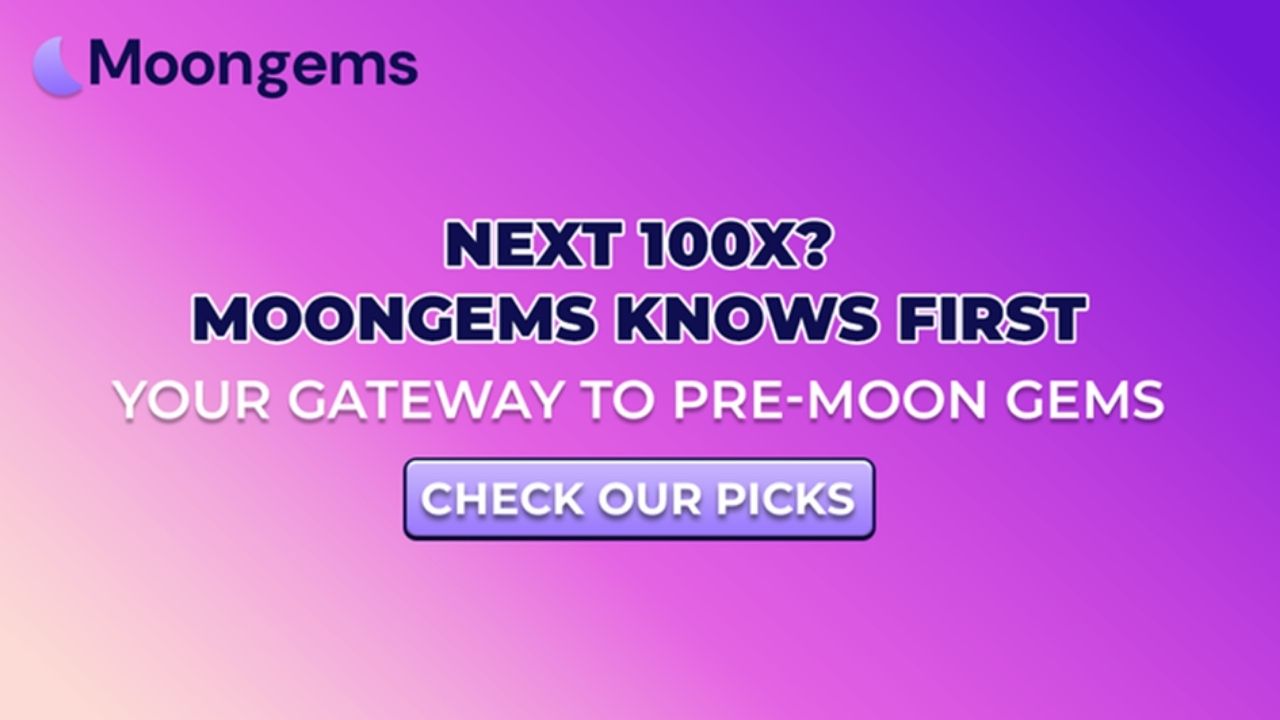
Conclusion: Early Is Only Smart When It's Built on Evidence
There’s a fine line between early and premature—and in presales, that line can cost you everything. The smartest investors know that entering a project early is only beneficial if it's already grounded in execution, transparency, and utility. Otherwise, you're not early—you’re underinformed.
MoonGems provides investors with the tools to clearly identify this distinction. With MVP tracking, KYC/audit badges, token utility filters, and live project rankings, MoonGems enables you to assess whether a presale is genuinely early-stage—or simply not ready.
Conviction is powerful, but only when it’s earned. In 2025, make your entries based on delivery, not decks.
Want to Spot Presales That Are Ready—Not Just Early?
Explore MoonGems.io: the early-stage discovery platform where real progress is ranked, tracked, and filterable. MVPs, audits, and KYC filters help you find presales that are actually building—before they trend.
Frequently Asked Questions (FAQs)
- What makes a presale “too early” in 2025?
A presale is considered too early when the project lacks fundamental indicators of readiness—such as a live MVP, a transparent and experienced team, working tokenomics, and a realistic roadmap. If there's no code, no product demo, and no timeline that aligns with the team’s capacity, it's likely the project is still in an idea stage. These early launches tend to carry higher failure risk because they are often built around speculation, not delivery. MoonGems helps investors avoid such traps by flagging projects with incomplete fundamentals, missing audits, and absent dev activity. - How can I tell if a project actually has a working product?
Check for a live MVP link, GitHub commits, testnet demos, UI previews, or community beta testing updates. A project with none of these is likely not building yet. MoonGems provides MVP status indicators on listings so you can quickly separate builders from talkers. If the MVP section is blank or full of buzzwords, assume execution hasn’t started—regardless of what the team says in their Telegram channel. - Should I ever invest in a presale without utility?
Only if there’s a clear and documented roadmap showing when utility will launch and how it fits into the ecosystem. For example, a meme coin with no staking or burn utility may be fine short term—but serious investors should look for tokens with real mechanics. MoonGems tags tokens by utility type (e.g., staking, governance, platform) so you can make informed choices. - Is it ever safe to invest in a project with an anonymous team?
In rare cases, yes—but only if the team is KYC’d via a trusted launchpad, has a proven track record under a known alias, or the project is completely community-driven and transparent. However, these are the exceptions—not the rule. Most scams originate from anonymous teams that disappear post-TGE. MoonGems includes KYC badges to help you identify which projects have passed basic verification. - How does MoonGems help prevent early-stage investment mistakes?
MoonGems filters and ranks presales based on real criteria—such as MVP availability, audit status, KYC verification, utility type, and roadmap progress. It cuts through hype and allows you to build conviction based on data, not noise. Whether you’re looking for hidden gems or avoiding high-risk traps, MoonGems acts as your first line of defense in presale investing.
Glossary of Key Terms
Presale:
An early fundraising round where tokens are offered to investors before public listing. Presales typically offer lower prices but come with higher risk due to the project’s development stage.
MVP (Minimum Viable Product):
The first functional version of a project that delivers real value. MVPs may be simple, but they demonstrate the team’s ability to ship.
KYC (Know Your Customer):
A compliance process in which project team members verify their identity through a trusted third-party platform. KYC helps reduce the risk of fraud and scams.
Audit:
An independent security assessment of a project’s smart contracts or codebase. An audit doesn't guarantee safety but signals effort toward transparency and risk management.
Cliff Period:
A period after token launch during which insiders, developers, or investors cannot sell their tokens. Used to prevent early dumping and promote long-term alignment.
TGE (Token Generation Event):
The date when a crypto project officially mints and distributes its token. This event typically marks the start of public trading.
Article Summary
Presales can offer huge upside—but only when timed correctly. Investing “too early” in a crypto project that hasn’t delivered an MVP, shared a realistic roadmap, disclosed a team, or developed token utility can lead to significant risk and losses. This MoonGems article breaks down the five biggest signs that a presale is not ready for your capital—from missing products to premature fundraising. With tools like MVP indicators, KYC/audit filters, and token utility tags, MoonGems helps investors make smarter, conviction-based decisions before jumping into speculative launches. Early is good—but only when it’s backed by evidence, not empty promises.
Disclaimer
This article is for educational purposes only and does not constitute financial advice, legal counsel, or investment recommendations. Cryptocurrency investing—especially in presales—carries high risk and volatility. Always do your own research (DYOR) and consult with a licensed financial advisor before allocating capital to any project. MoonGems provides information, not endorsements.



